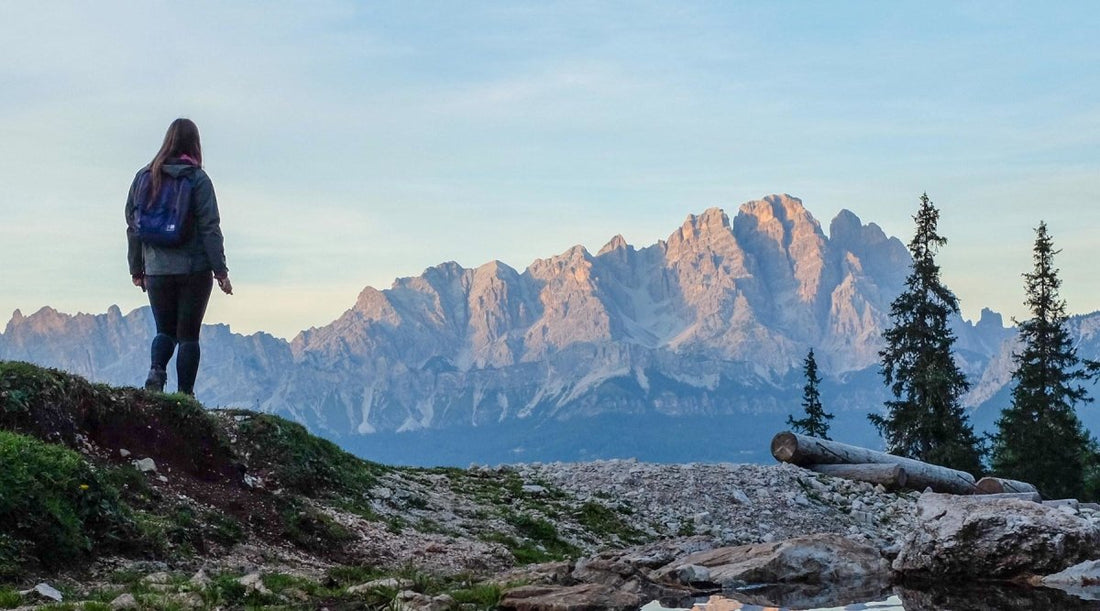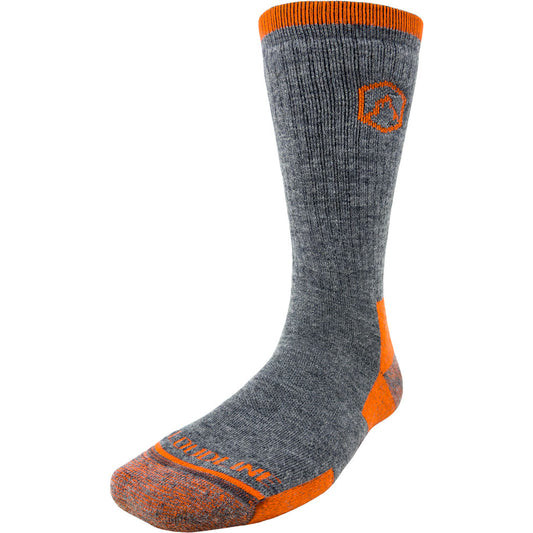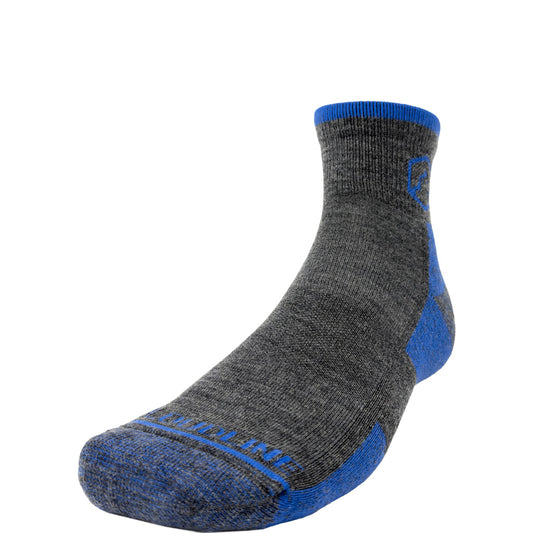
How to Choose the Right Hiking Trail
Some trails are familiar, like a pair of cushioned slippers formed to your feet. Each turn is comforting and warm, as known as the pages of your favorite book. Some trails are rocky and wild, proving to you with every mile both the thrill of nature and your own limitations.
For different experience levels, locations, time constraints and moods, there are likely to be a variety of trails near you that meet your needs. With some helpful resources and considerations, finding the perfect hiking trail is easy.
Where to Research Hiking Trails

You can use a website or app to find trails no matter where you live. AllTrails and REI’s Hiking Project are two great places to begin searching trails. As hikers use trail profiles on these apps, they are able to rate and give reports from their experiences. For every level of hiker, the information can aid in making informed, realistic decisions. Where a beginning hiker could discover local trails with simple navigation, a hiker looking for significant elevation gain would find the mile-by-mile altitude report most helpful.
Read through some recent reports on the trails you are interested in to find out what gear you might need to bring along if there are confusing sections of the trail, or what unexpected circumstances (like parking fees or road closures) could affect your hike.
As you are looking through the resources, you will notice difficulty ratings on each trail. Take these with a grain of salt, as they are rated by the creator of the trail’s profile. Instead of trusting the rating alone, consider all of the hard facts given about the trail, and make your own decision about its level with your fitness, gear, and experience in mind. More information for you to make the best call for your hike will come in the next section.
In some less-visited areas, resources like these do not have enough information to plan a hike around. If you find yourself in that situation, call a local ranger station for help planning a day hike. In most hiking areas, there are also trail guides or books of trails and maps available to guide you in choosing a hike. Scout out local libraries and outdoor shops for these, being careful to note how recently the resources were published- sometimes trails can change! If you get your trail information from a print source, be sure to call the ranger station to find out more about current trail conditions before setting off.
In highly-trafficked areas like popular National Parks, take some time to research what trails are busiest at what times. If you are looking for a little more solitude, try beginning earlier in the day or doing a short hike in the afternoon or evening. In areas like this, Visitor Centers are excellent resources for finding trails just right for you on any given day! Take advantage of maps, guide books, and the staff suggestions to get a complete picture of the area and options open for you.
What To Look For in a Hiking Trail

The first items on your trail-finding checklist should center around what you can do safely. Begin with a weather report from as close to the trail as possible on the day you want to hike. Are you prepared for the weather that day? Notice the highest elevation of the trail. Will you be ready for the cooler temperature and wind that come with higher elevation?
Next, consider the trail itself. Is it mostly dirt, or rocky and rough? Will there be wet, muddy sections or ice, and are you prepared to handle these conditions? When in doubt as a beginner call for recent information or choose another trail.
Navigation ease is a crucial consideration, especially for beginning hikers. The trail you are hoping to hike could have excellent signage and clear-cut directions, or it could be confusing to those without a detailed map and some navigation experience. Often, this is impacted by the managing organization of the area. While National Forests tend to require more skills and preparation, State or National Parks are typically well-marked and easy to follow. When starting out, one of the most helpful skills to begin building is topographical map reading. Though there are simple GPS resources available, try printing a map of even well-marked trails from Caltopo.com. As you hike, pull out the map and become familiar with contour lines, and how to locate yourself using the details on the map and your surroundings. Starting early with map reading can make an incredible difference in the trails you are able to take, and how quickly you progress to more untouched areas. If you are unsure about the signage and clarity for navigation of a trail, find out who manages the area and contact them for more information.
Everyone has different levels of fitness and acclimation to altitude and climate. Though you might be a marathon-runner on low ground, strenuous activity at high altitudes can quickly zap your energy and change your “normal” abilities. As someone from a cool, dry environment, hiking in dense humidity could limit your typical hiking level. Be sure to notice the length of the hike, the amount of elevation gained through the hike (total, not net!), and environmental considerations. If you are not sure about your level, test out your endurance with a long walk around your neighborhood. If you went five miles and felt a little tired at the end, maybe a two to three mile trail is the best beginning point for you.
Once you find a trail that fits your skill, fitness and experience level for the area and day you are planning your hike, make sure to take note of the accessibility. How will you reach the trail, and are you and your car able to reach it safely?
Lastly, find out how heavily trafficked the trail is. Popular trails tend to have more commodities, like a restroom or water filling station and map at the trailhead. If you are comfortable hiking along with other adventurers, a highly-trafficked trail could be a great and safe environment to begin in. If you are seeking a little more solitude in your hiking experience, try to find out which trails are most visited using the resources mentioned above.
Hike Your Own Hike and Have Fun!

With safety considerations out of the way, you can begin creating your bucket list of hiking trails and start checking them off one by one.
Would you rather hike in trees, or through exposed areas with sweeping views? Have you always wanted to see mountain wildflowers in bloom, or walk underneath a waterfall? Check out destinations you would love to see and plan hikes that take advantage of things like wildflower season and fall colors.
Another consideration to keep in mind is what else is around the area. Would you love to explore a nearby town for a well earned post-hike burger? Some of the best overall hiking experiences come paired with great food, so do some digging and try more than just a new trail to make the day complete.
Know Your Hiking Jargon

To end, here are just a few common hiking terms to know when researching trails:
- Trailhead: where the trail begins or ends, where you access the beginning or end
- Out-and-Back: a trail that goes out to a point and returns the same way
- Popsicle: a trail that is shaped like a popsicle, with a single trail leading to loop
- Loop: a trail that does not come back the same way as it came, but joins the trailhead again at the end
- Cairn: a stack of rocks used to mark the trail
- Topo (or topographical): a type of map that shows the geological features of an area in detail
- False Peak: a point on an ascending trail that looks like the top, but is not
- LNT (or Leave No Trace): a set of guidelines hikers should follow to keep the natural area clean and healthy
I hope the Beginner’s Guide to Hiking series has enabled and encouraged you to get out on a trail with confidence. If you have still been waiting to go hike, choose a simple trail near you. Even if it is a paved path in the suburbs or just a walk down your road, take some time to get outside and get moving. Warmer weather is just around the corner, and getting out to begin is often the most difficult step.
Enjoy your adventures, near and far!




